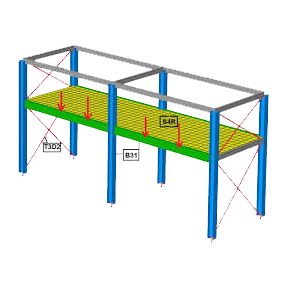Official git repository of Elmer FEM software
-
Updated
Nov 18, 2024 - Fortran

The finite element method (FEM) is a numerical method for solving problems of engineering and mathematical physics. Typical problem areas of interest include structural analysis, heat transfer, fluid flow, mass transport, and electromagnetic potential.
Official git repository of Elmer FEM software
OpenRadioss is a powerful, industry-proven finite element solver for dynamic event analysis
Tensor Toolbox for Modern Fortran
FEAPpv -- free personal version of the FEAP
This is a plant/farming simulator based on Finite Element Method, which targets crops in fields and soil foundations. This software provides multi-physical simulations of agriculture for canopies, plants, and organs for farmers, breeders, agronomists, and civil engineers. Please try and give us feedback.
Parallel programming for Finite Element Analysis using FORTRAN and PETSc
OpenSTAP is a Finite Element Method (FEM) Solver based on STAP (KJ Bathe, FORTRAN IV), and modified version STAP90 (Prof. Xiong Zhang, Tsinghua University, FORTRAN 90). Basic elements, some advanced elements and methods are added and an Abaqus interface as well. Works with ParaView and Intel MKL.
User Material Model Implementation (UMAT) based on Finite Viscoelasticity Theory for Hydrogels in Abaqus
System of HydrodYnamic Finite Element Modules
MPI/OpenMP hp-adaptive 3D finite element software
Two dimensional high-order spectral element method fluid dynamics solver (this code is no longer maintained!)
Expandable And Scalable Infrastructure for Finite Element Methods, EASIFEM, is [Modern Fortran](https://fortran-lang.org) framework for solving partial differential equations (PDEs) using finite element methods. EASIFEM "eases" the efforts to develop scientific programs in Fortran.
3-D particle-in-cell (PIC) rarefied plasma simulation with finite element method (FEM) field solver
A quick and dirty project to deploy a working DG solver
This code is the Fortran 77 version of the UMAT, FLOW, and SDVINI subroutines of the cartilage model, I firstly proposed in my Master's thesis. The model with minor modification was used in several publications.
Personal fork of OpenRadioss